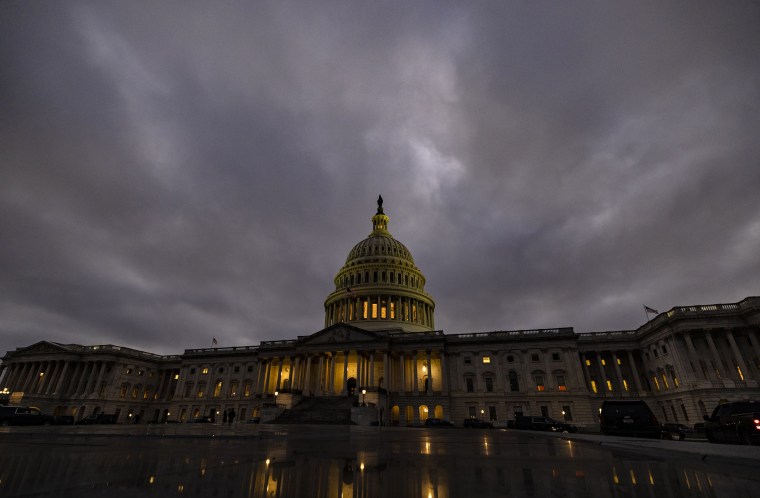Republican Rep.-elect Yevette Herrell of New Mexico could find her district eliminated before she’s even up for re-election in 2022. So could another incoming GOP congresswoman, Mary Miller of Illinois. That is, if Democratic politicians in those states have the political guts to draw maximally partisan lines in the upcoming round of redistricting, with the aim of tossing these first-term Republicans out of office.
In addition to their principled stand against gerrymandering, House Democrats have also hesitated to draw partisan lines too sharply for fear of weakening their own hold on districts.
That’s an iffy prospect now, since House Democrats’ professed good-government outlook generally views partisan line-drawing of congressional districts with disdain. Their political reform package, which passed the House nearly two years ago but soon died in the Republican majority Senate, would have, among other things, expressly banned gerrymandering, which is designing the boundaries of a state’s congressional districts so that they maximize one party’s dominance in the resulting districts.
House Democrats, though, don’t have the luxury of being so finicky about the redistricting process, as the majority they won in 2018 stands in peril. When the 117th Congress convenes at the beginning of January, House Democrats will hold the narrowest House majority in the past two decades, with 222 seats to Republicans’ 212. (One district remains uncalled.) House Democrats suffered these serious losses even as President-elect Joe Biden’s victory made President Donald Trump only the fourth elected president over the past century to lose re-election.
The reapportionment of House seats among states won’t be announced until at least April 2021 following the 2020 census, when the country’s newly tallied population will inform how to divvy up House seats so that each of the 435 seats in the House represents the same number of people. But census data through 2019 makes clear which places have gained — and lost — population. On the whole, the gains have been in territories more favorable to Republicans. Furthermore, Republicans are likely to draw the most winnable district lines in states where they have the power to do so, such as Ohio and Wisconsin, if post-2010 map-drawing is any guide.
Texas, with a fast-growing population, is likely to gain three new House seats. Sure, Democrats are becoming more competitive there, as Biden came the closest a Democratic nominee has gotten to winning the state since 1996. Yet with Republicans controlling the governorship and state Legislature, which do the congressional district-drawing, they’re certain to do everything to ensure the three new districts are drawn to be friendly for GOP candidates.
Florida is on track to gain one House seat, with its state government under full Republican control. North Carolina is also set to gain a House seat, and though Gov. Roy Cooper is a Democrat, his office is unique among state chief executives in that it has no power to veto maps drawn by the Republican-majority Legislature.
All of which means that Democrats who want to have any chance of keeping the majority must aggressively draw favorable district lines in states where they have full control of the process.
Illinois is the most obvious target. It’s expected to lose a seat in redistricting because of declining population. Republican House members whose districts are potentially on the chopping block include Adam Kinzinger and Darin LaHood, along with Miller, who takes office in January.
Maryland presents another ripe opportunity to pick up a Democratic House seat. The governor, Larry Hogan, is Republican and sure to veto a map that seeks to convert Democrats’ current 7-1 House delegation edge to 8-0. But Democrats can override a veto in the Legislature, essentially putting them in control of the map-drawing. They could easily carve up the district of Maryland’s lone Republican House member, stretching from the state’s Eastern Shore to Pennsylvania.
In the West, Democrats in New Mexico have a chance to gain a seat if they’re willing to upend long-standing House district lines — specifically the 2nd Congressional District, a traditional Republican stronghold that runs along the entirety of the state’s U.S.-Mexico border. New Mexico Democrats, though, have full control of the redistricting process and could seek to radically redraw the state’s three House seats. Parts of the 2nd District could be moved hundreds of miles away to take in lots of Democratic precincts in the state’s northern tier, jeopardizing Harrell’s chances in 2022.
In addition to their principled stand against gerrymandering, House Democrats have also hesitated to draw partisan lines too sharply for fear of weakening their own hold on districts. As redistricting pros like to say, the salami can be sliced only so thin, and moving precincts favorable to one party or another can strengthen or weaken surrounding seats.
But now, staring at the possibility of Republicans retaking the House, Democrats have no choice but to maximize their gerrymandering gains where they can get them or face unilateral disarmament. That would blunt, at least somewhat, the political pain Republicans are about to inflict in states where they control the gerrymandering process.


